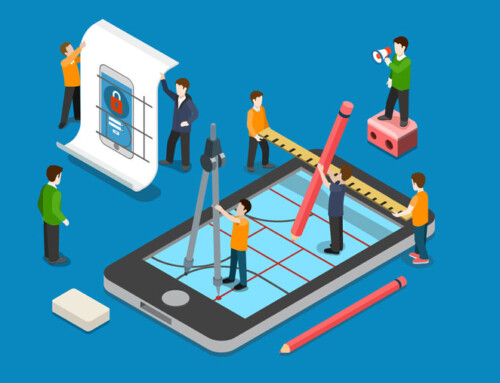 In the modern world, getting a new lead, or even better, making an actual sale, isn’t and shouldn’t be the end of the battle. In fact, once you make that initial connection, the “real” work begins.
In the modern world, getting a new lead, or even better, making an actual sale, isn’t and shouldn’t be the end of the battle. In fact, once you make that initial connection, the “real” work begins.
Customer onboarding is one of those buzz words you may have heard in some context, but you might not completely understand it. It’s about solidifying that new relationship – bringing new customers “on board” with your company and product – to create loyal and repeat business. The first few months of a new customer relationship are crucial. Do it right, and you’ll likely have a loyal customer for life. Do it wrong, and the bad word-of-mouth can kill you. You need customer acquisition, customer conversion, customer retention, and you need to make each step along that train a fantastic customer experience. It’s all about successful customer onboarding, and whether you’re a brand-new startup, or an established company, these are the six mistakes you need to stop making. Today.
Not Caring Early On
Customer onboarding starts before a potential customer makes contact. Maybe even before they’ve even heard of you or your product. Too many businesses incorrectly think that onboarding will essentially take care of itself, down the road, if they provide a great product. That’s certainly part of it. They spend all their time and energy elsewhere, with little or no thought to the customer experience.
Instead…make every interaction swift, pleasant, and above expectations. Plan ahead, think like a new visitor to your website, and anticipate their problems and confusion. There are plenty of services, like WalkMe, that can assist in this. Make customer onboarding a top priority from the moment your idea first pops into your head…not later once you’ve picked up a few (or a lot) customers, as it may be too late by then. Remember, it’s the first 90 days that can make or break your these relationships.
Long and Tedious Sign-up Funnels
This one is a deal-breaker for a lot of people. Have you ever tried to sign-up for a newsletter or product information by entering your name and email address on a website, then been told to check for a confirmation email at that address, with another link, and that link takes you back to the website and asks you to sign in, which then takes you to an account settings page asking for additional information, before taking you to a generic homepage that has nothing to do with the information you wanted in the first place? Sheesh…
Instead…collect ONLY what you need. Make it fast – as few steps as possible. Make it simple. Most people are immediately turned off by forms requesting too much information. A first name and email address is probably all you need at first contact (depending, of course, on your specific goal), so why do so many forms request telephone numbers, and physical addresses, and a multitude of other details that couldn’t possibly be relevant? Cut the excess. Simplify. Someone sitting on the fence is more likely to enter two quick fields.
Using Only One Communication Channel
It used to be that a phone number was the only way to contact a business (remember the days when everyone and their uncle had a 1-800 number? No? Perhaps I’m dating myself…), but that’s simply not the case anymore. And beyond that, many people dislike having to make a phone call. It’s simply not the main method of communication anymore.
Instead…provide different avenues for your customers. Some love to speak with a live rep, others prefer email, and still others like the immediacy of social media. You can utilize a “live chat” function on your website that responds to specific customer behavior. Allow customers to choose the channel that THEY want, not the one you want to provide. Telephone, email, web form, live chat windows, social media platforms, instant messaging apps, and even snail mail could all be an option. Let them contact you the way they want, so they have no reason not to.
Over-promising and Under-delivering
We get it. Your product or service is the best. It’s awe-inspiring and life-changing. You need to reel in the adjectives and superlatives. Good salesmanship is about the CUSTOMER anyway…how it can help them, benefit them, improve their lives. But tread carefully. In your enthusiasm, you don’t want to promise the moon and deliver a pebble. It’s the same shape and color, sure, but your customers might feel a little misled. And when they do, you can expect them to tell other people.
Instead…be honest and realistic. Selling a service or product is NEVER about exaggeration, unless you’re interested in making one sale and then calling it quits. If anything, under-promise (clearly and succinctly extolling the main benefits, of course) and over-deliver. Who doesn’t love getting more than they expected?! And people are apt to share that experience with others.
Delayed Response to Customer Complaints and Questions
Once you’re created and proudly offer several communication channels, you can’t lean back in your chair thinking “That should make them happy”. Having more than one way for customers to get in touch with you – for both questions and complaints – is step one. The second, and more important, is getting back to them in a reasonable amount of time.
Instead…monitor your communication channels, and resolve to respond as quickly as possible. Social media users expect – right or wrong – a near instantaneous response, and when it doesn’t materialize, people are quick to complain in a very public forum. Your customers want to feel important. They want to feel that you care about more than just the money in their pocket. Let them know that their questions, concerns, and complaints matter to you by answering them quickly. Check out Evergage or Intercom to help you out here.
Cutting down the time between anything – complaint and resolution, question and answer, purchase and delivery – is a big part of successful onboarding. Scanning and saving documents directly to the cloud can help make things easier there. ccScan, for example, integrates seamlessly with Salesforce, optimizing for less data entry and faster processing of customer orders. And that’s a big win.
Cookie Cutter Communication
There’s a program out there to automate almost everything these days, including communication. And while it definitely saves time and money, you want to be careful about treating everyone the same.
Instead… endeavor to communicate with your customers as people, and not numbers (or worse, dollar signs). Pay attention to the details, and differentiate where you can. This means going beyond an email program that automatically inserts their first name into a letter going out to thousands of people on a list. There’s a difference between someone in the midst of their free trial, for example, and someone nearing their renewal date after a year (or month, or whatever) of paid service. Your communication with them should reflect this.
These six mistakes to avoid with customer onboarding are, thankfully, easy to fix. And cost very little money. Win-win. There are others, of course, but “The Two Hundred and Three Deadly Sins That Kill Customer Onboarding” doesn’t have the same ring to it. What would you add to the list? What products or services have you found to make onboarding easier and smoother? Please contact us directly





